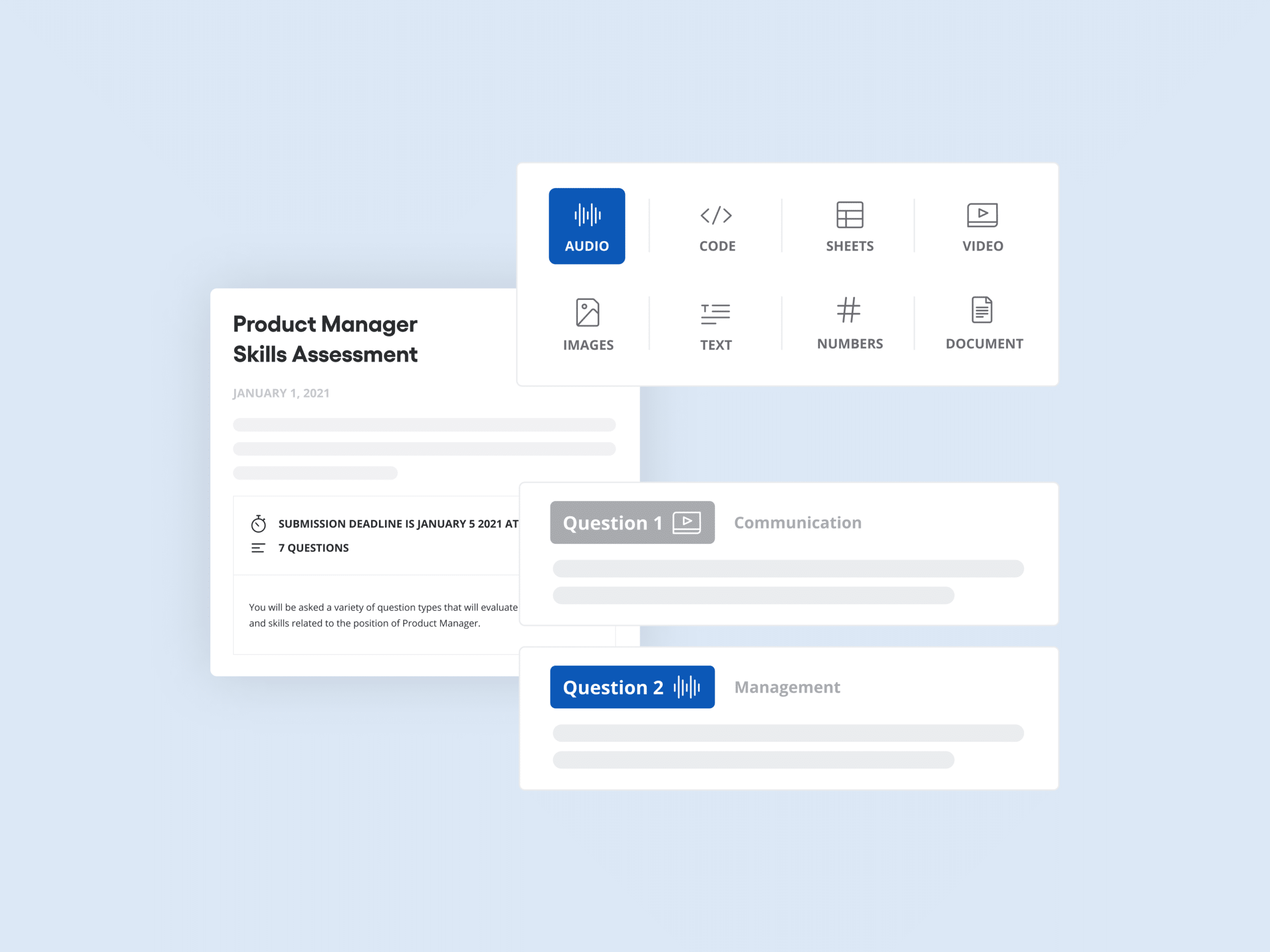Why did a record-breaking more than 24 million Americans leave their jobs between April and September in 2021? Recently, researchers at MIT Sloan tried to find out.
The Great Resignation, as it’s become known, appears to be the result, in part, of toxic corporate culture with the analysis finding “failure to promote diversity, equity, and inclusion; workers feeling disrespected; and unethical behavior,” all lead to employee attrition.
As senior leaders seek to stem the tide of resignations, examining how employees are valued and evaluated for promotion, recognition, and training opportunities has become a key goal. And, at the heart of that examination is a job task analysis.
A job task analysis allows the organization’s leaders to better understand what, exactly, employees do all day. It provides an objective baseline for performance evaluations, writing accurate job descriptions, and rewarding hard work more fairly.
In this guide, we’ll break down how to create an effective job task analysis and use the data to create advancement opportunities, improve job descriptions, and ultimately better the candidate and employee experiences.
What is a job task analysis?
A job task analysis evaluates a job, rather than the person doing the job, to understand the larger work responsibilities associated with each position. This data-driven process seeks to develop an overview of the knowledge, job tasks, and responsibilities that an employee must master to be successful in a specific role.
By performing job task analyses, companies can begin to understand skill gaps, identify training needs, write a job description that entices more candidates to apply, and develop fair hiring practices. Notably, this process does not seek to identify the “ideal candidate” — rather, job task analyses help the company document each part of the job to comply with professional and legal guidelines.
Is a job analysis the same as a competency model?
The short answer: no.
A job task analysis takes a position-focused approach as the foundation for writing a better job description, improving performance appraisals, offering training programs, or otherwise developing a highly skilled and engaged workforce. The job task analysis focuses on the “what” — the core tasks, duties, and responsibilities that a potential employee will be asked to perform.
Conversely, a competency model focuses on the “how” — what skills, knowledge, and abilities does an employee need to perform their job successfully?
Competency models focus on the candidate, rather than the position. They also seek to define skills such as communication, decision-making, teamwork, and organizational skills that an employee or job candidate will need.
However, job task analyses and competency models do overlap.
Competency modeling can specify skills or tasks that are aligned with the job analysis approach. For instance, a competency model may identify “advanced coding” as a skill needed in a senior developer role; the job task analysis would also identify advanced coding as a day-to-day activity in which the senior developer would engage.
Why should you do a job task analysis?
A job task analysis serves many purposes. From improving your job descriptions to creating fair opportunities for advancement and promotion, a job task analysis provides the foundation for a great employee experience.
Improve your hiring process
A successful hiring process starts with the job description. Often, companies rely on job descriptions to provide a broad overview of the responsibilities of a position. These job descriptions are useful to advertise the position and recruit candidates, but they lack detail as to the actual tasks involved.
A successful job task analysis can help recruiters and hiring managers unearth these details. A job task analysis provides the basis for objective, relevant and job-related selection criteria — and if your company is concerned about fair hiring practices, this information is vital.
Likewise, more accurate job descriptions that reflect the exact tasks and requirements of the job can help companies improve quality of hire, reducing recruiting costs and saving time.
Make fair advancement decisions
A job task analysis enables companies to develop fair, objective criteria to be used in making promotion and salary decisions. Understanding what a job requires in terms of time, effort, and advanced skills helps HR teams estimate the right compensation. When combined with a skill gap analysis, job task analyses can be useful to determine what training and advancement opportunities to offer — opportunities that keep employees engaged and motivated on the job.
Set performance standards
A job task analysis breaks down complex tasks into smaller elements. This job performance data show employees the minimum job requirements and makes it easier for employees to make sure each task is carried out correctly. When it comes time for performance appraisals, there are no surprises: managers are easily able to identify skill gaps, recommend employees for advancement, and ensure that everyone is evaluated fairly.
Ultimately, a successful job task analysis is the first step to reducing mistakes, increasing employee productivity, and increasing transparency in the advancement process.
Steps to conducting an effective job task analysis
A job analysis can be completed through a variety of methods. A 2014 SHRM survey found that most companies use a combination of interviews, observation, and structured questionnaires. Here’s how to examine the different tasks employees perform and collect job analysis data to improve hiring and retention outcomes.
Identify and interview subject matter experts (SME)
A subject matter expert (SME) is an employee at your company who has been in the role and can understand the industry best practices involved with performing at a high level. This person might be the current employee in the role, the employee’s manager, or someone who started in the role and advanced to a higher position successfully. Ideally, you’ll be able to talk to a few people to understand what the day-to-day activities of the role look like.
In this phase, simply create a list of primary sources with whom you’d wish to speak. You’ll want to conduct your own research and observations before meeting with these SMEs.
Observe the job
The next step of the job task analysis is to observe the role yourself. If this role is currently filled, shadow the employee for a day to get a sense of their activities for yourself. What job tasks does the person do during working hours?
This step may not be possible if your company is working remotely. If you can’t physically shadow someone, ask them to share their calendar with you or if you can attend some of their virtual meetings. Watch for tasks or activities that an employee is performing that they may not be aware are part of the job duties. For instance, if you see someone taking notes in a meeting, but that’s not listed in their job description, record that observation for future reference.
List the known duties of the role
Responsibilities are broad categories of essential duties that a role requires. Responsibilities can be broken down into job tasks. For instance, “Fulfilling customer orders” is a responsibility; critical tasks within that category include things like printing out shipping labels or packaging orders for shipment. Try to get as granular as possible when it comes to listing job tasks. Keep your statements clear and concise. Highlighting these specific tasks makes it easier to identify knowledge requirements, specify any physical demands, and create a clear picture later on in your job description.
Create questionnaires for employees
Continue to illuminate the job’s requirements by creating a structured questionnaire for employees to complete. These questionnaires can be used to find out how often someone performs a task, or to assess if there is something in the job description that is irrelevant.
Alternately, ask your existing employees to complete a skill assessment. Skill assessments are typically used to screen candidates, but current employees can also participate.
By designing a series of questions from Vervoe’s library of over 300 validated assessments, HR teams can understand which skills are pertinent and relevant to the day-to-day tasks. Use a job title to generate one from scratch using our builder and be prompted with the right skills and questions to use.
Interview specific workers
Before you start reaching out to your SMEs, review previous job descriptions, onboarding materials, and similar roles advertised at other competitive businesses. This should give you some perspective as to what questions to ask.
When the time comes to question your SMEs, ask things like:
- What are your main 3-5 job responsibilities?
- How would you describe the successful completion of your daily duties?
- Tell me about the opportunities for advancement in this role.
- Do you perform duties that aren’t listed in your job description?
- How does management support you in this job?
- Which departments do you regularly communicate with for your duties?
Try to understand how regular or how frequent some of the tasks the SME lists is required. Often, interviews provide a snapshot in time: if your SME is currently experiencing a busy holiday rush, for instance, you may find they’re reporting a specific task more frequently than they would the rest of the year.
Define tasks and responsibilities
Next, finalize the position’s job tasks and responsibilities. Use the job analysis data from the questionnaires as well as qualitative data from your firsthand observation and SME interviews. Refer to existing documentation, but don’t get too rooted in what already exists. Remember, the goal is to evolve your job descriptions and provide more detail than a candidate would typically see in an employer-branded job posting.
Verify your findings with current employees
Review your findings with your SMEs and hiring managers to ensure that everyone is aware of how the role has evolved over time. Some managers may not realize, for instance, that in the past an employee in this role took on more responsibility than they should have.
What may have originally started as an entry-level role in your job descriptions may have since become a more technical one. Likewise, your job analysis may show that more than one person is needed to complete all the duties and responsibilities assigned to the role. Make sure all stakeholders are in alignment with your findings.
Finalize the job task analysis
The final step in your job analysis is to take the information you have and begin to translate it into meaningful action. Define your employee selection criteria and refine your job descriptions.
Speak to existing employees about training programs and see if there’s interest in futher skill development. Revisit your compensation and performance evaluation benchmarks to ensure people are being paid fairly for the work performed.
A job task analysis can also illuminate new ways to hire. For instance, a skill assessment can be a better predictor of success when task analysis has been completed. Questions in the skill assessment can be designed to replicate specific tasks and responsibilities listed in job descriptions, evaluating whether a candidate is truly capable of doing the job.
[Read more: How Skills Based Hiring Can Transform Your Company]
How much does it cost to complete a job task analysis?
Depending on the availability of your existing employees, as well as whether or not you use an automated skill assessment as part of the questionnaire step, a job task analysis can take as little as three to four days. The time and cost of a job task analysis depend on the complexity of the position. By one estimate, for lower complexity positions, costs range from $6,500 – $25,000.
Final thoughts
A job task analysis may seem expensive and time-consuming; but, when you consider the costs of making a bad hire or the lost resources that come with high employee turnover, this exercise can prove to be invaluable. By gaining a deeper understanding of the job tasks each employee is responsible for, your organization will be better positioned to create a culture of recognition, productivity, and growth.























